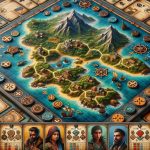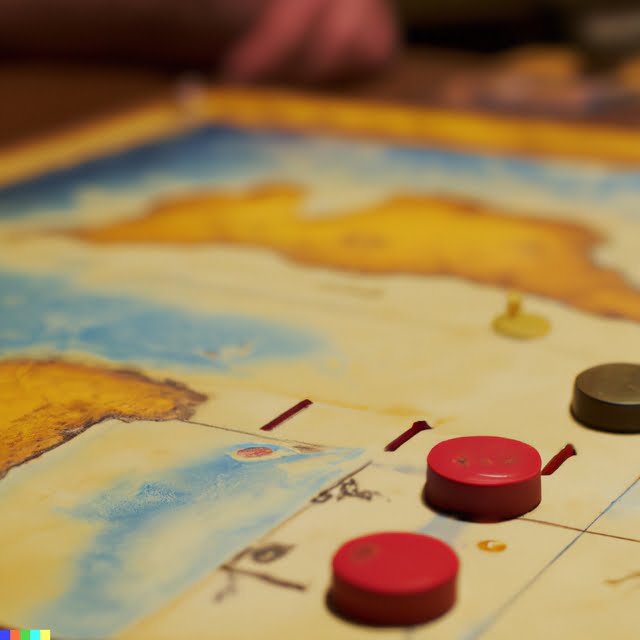Discussion of Options
When making a board game based on Treasure Island, it is important to consider carefully the type of game board that best suits your needs and vision. One common option is a traditional gaming board with spaces or squares, where each player would move a game piece across the game squares as they complete certain tasks or challenges. Other possibilities include using grid paper and drawing obstacles with different colored markers, as well as using cardboard boxes as islands. Additionally, an inventive option might be to make a map out of dough or clay that can be molded and painted! This last option may require more time and effort, however it does offer an entirely unique experience for the players. Consider what kind of environment you’d like players to explore when creating their own unique board game about Treasure Island ” then create accordingly!
Creative Writing
Questions:
-What would you do if you found yourself stranded on an island?
-Describe in detail the look of the pirate captain as he sails into the bay.
-Imagine what it would be like to have a conversation with Long John Silver.
Tasks:
-Write a poem about an adventure under the sea.
-Create a map of Treasure Island, marking out key locations and features on the island.
-Design a flag for Captain Flint’s ship, incorporating symbols that reflect his reputation as a fearsome pirate captain.
Rewards and Challenges
Rewards: Players can earn rewards such as golden coins and gems, small items like stickers or secret messages, or larger prizes like pieces of pirate treasure.
Challenges: Players can face a variety of challenges while playing. These could include dice rolls to determine which island they land on, having to correctly answer puzzles to move around the game board, or having to complete mini-games in order to acquire special treasures. Additionally, players could be set tasks such as collecting a certain number of coins or gems before being able to sail away, and unexpected obstacles such as storms that require players to discard an item in order to pass safely.
Variations
One possible variation of the Treasure Island board game could involve a central character that players can use to represent themselves throughout the game. Furthermore, this central character should have abilities or properties with which they can interact better with certain parts or areas of the game. For example, one ability could be element mastery – allowing them to work with elements such as earth, air and fire in order to move or locate various items or hazards. Other abilities/properties might include magic-based ones like shape shifting or teleporting, physical attributes (strength and agility), unlocking skills (to open chests, doors etc.), quirky senses (for sniffing out clues, danger etc.), and finally numerical skills for solving puzzles or deciphering symbols.
In order to make the game more interactive and exciting another option would be player-versus-player fights at special strategic points, for controlling parts of the island by claiming them for their own. These fights can vary in difficulty depending on what is being contested for and any special rules you add about how players need to win/lose these duels.
As an alternative to fighting over territory you could also incorporate a card system where each character has a set number of cards upon starting the game, representing things like weapons and other items related to conquest and defense (scouts coming over sea to enemy shores with ships loaded with precious cargo if necessary). Players draw from their card decks while battling enemy commanders on certain battlefields in order to gain control. Depending on how various battles go then different characters win control over different areas of the islands – by taking part in multiple conflicts in this way at once then it creates an interlinked dynamic where every outcome affects all parties involved.
More puzzle/mystery oriented variations involve incorporating treasure maps scattered around various locations on the island so that players can try to piece together a trail on where they must go next in order to find particular pieces of loot, wealth and riches leading them ultimately towards their goal – locating Xanadu’s most valuable secret!
Sample Adventures
Creating sample adventures is an important part of making a Treasure Island Board Game. Sample adventures can add more fun and excitement to the game and make it easier for new players to follow the game. Sample adventures can range from classic treasure hunts to more exciting missions, like escaping a deadly enemy or navigating a treacherous island.
When creating sample adventures, decide on the desired length of play, difficultly level and types of obstacles. Create characters with unique strengths and weaknesses and places of interest such as lost artifacts or secret passages that help drive the storyline forward. Different combinations of characters, settings, objects and goals can be used to tailor each adventure specifically to the group playing. Additionally, consider adding different levels or special rules such as luck tokens and rule cards that give players an advantage in solving problems during their journey.
Providing sample adventures for players is an enjoyable way to create memorable gaming experiences for all types of players. With the right combination of characters, puzzles, storylines, rewards and challenges you can make a treasure island board game filled with endless amounts of fun.
Design Ideas
The board game could be designed with an island or pirate-themed map on the surface. The map could feature various elements such as an outline of an island, pirate ships sailing through the sea, and various landmarks such as caves, coral reefs, and hidden pirate stashes. The cards could feature fun illustrations of pirates, boats, treasure chests, and exotic locations such as islands. As for other pieces needed for the game, dice and coins can be used to simulate a pirate’s journey across the ocean in search for treasure. Pieces can also be crafted from craft foam to represent different characters like Captain Flint or Long John Silver. These pieces can be painted in bright colors for added interest and playability. A creative way to incorporate a score board would be by having players move their respective pieces around a ship wheel divided into sections where each coin or point earned equals one revolution around it. This will make scoring easier and helps keep track of progress during gameplay.
Test It
For testing, you will need at least two people. First taking turns to roll the dice, and move your game pieces around the board. Check to make sure that all of the rules are being followed and that you are both having fun playing. Also, make sure that there is an ultimate victory condition for the game – one player should be crowned as the winner once all directions have been followed. Add any challenges related to spaces on the board (questions or physical tasks) that can be tested as well. Finally, make sure that the resources available on each turn (items collected from treasure chests) give players an advantage when completing challenges or defeating adversaries. Once testing is complete, your friends and family can get ready for some serious island exploration!

I love playing all kinds of games – from classics like Monopoly to modern favourites like Ticket to Ride.
I created this blog as a way to share my love of board games with others, and provide information on the latest releases and news in the industry.





